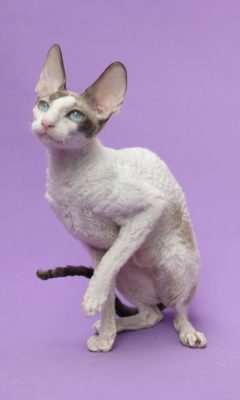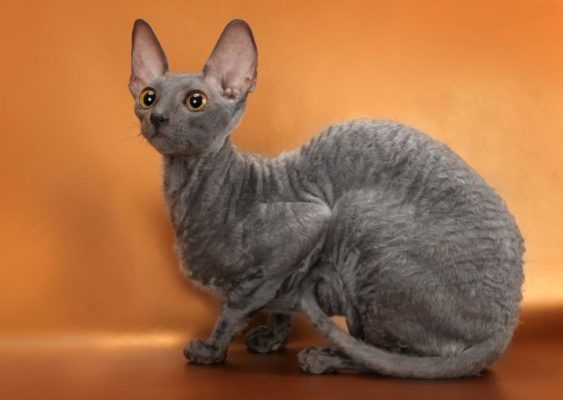Cornish Rex
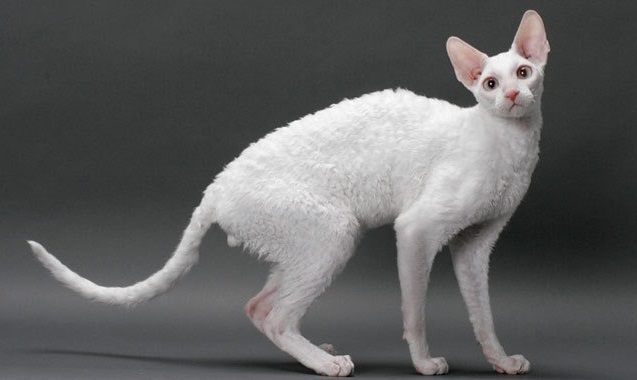
The Cornish Rex is a playful, active pet with a gentle and good-natured personality. He quickly and strongly becomes attached to the owner and his family. The cat loves the company of humans and does not tolerate loneliness. Give her a lot of attention; otherwise, its lack is fraught with unpleasant consequences.
Table of Contents
Breed Information
| Origin | United Kingdom |
| Size | 23-27 cm |
| Weight | Males 3.5-4.5 kg Females 2-3.5 kg |
| Fur Type | Short-haired |
| Color | Anyone |
| Lifestyle | Outdoors, indoors |
| Lifespan | 11-14 years |
| FIFe Classification | Category III: “Short-haired and Somali” Breed designation – CRX |
| WCF Classification | Group 3: “Short-haired” Breed designation – CRX |
| TICA Classification | CR |
| Group | Short-haired cats, cats for kids, hypoallergenic cats |
| Price | $100-400 |
Breed Photos
Origin History
The breed first appeared in 1950 in Cornwall, Britain. A kitten with a natural mutation was born on a small farm. He was unlike the others. The owner, Nina Ennismore, wanted to have the animal neutered, but a veterinarian talked her out of the idea. He advised her to contact the breeders. They confirmed that the unusual kitten is the first representative of the new breed.
Subsequently, the kitten was crossed with its mother and received the same curly-haired offspring. After six years of breeding, Nina began to experience financial difficulties. She put the cats that started it all to sleep. By 1960, only one representative remained: a kitten named Sham Payne Charlie. He began to be crossed with other cats to keep the breed alive.
In 1967, the Cornish Rex was registered in Britain. Fifteen years later, the breed was recognized by all felinological organizations. Today, it is forbidden to crossbreed the Cornish Rex.
Appearance
Representatives of the breed have a strong and muscular body. The body of the pet is slender, slightly elongated. The abdomen is taut; the chest is moderately broad. The graceful neck of the cat is moderately long and muscular. It has a triangular, convex head. Rex’s muzzle is wedge-shaped, with pronounced cheekbones. The cone-shaped ears are set wide, with rounded tips. The eyes are large, oval, and far apart. Their color corresponds to the color of the coat.
The limbs of the Cornish Rex have a well-developed musculature. The tail is thin and long, tapering towards the end. The coat is short, silky, and soft. It fits tightly to the body. The color can be any color. Cats with Siamese coloring are called Si rex.
Character
The Cornish Rex is a playful, active pet with a gentle and good-natured personality. He quickly and strongly becomes attached to the owner and his family. The cat loves the company of humans and does not tolerate loneliness. Give her a lot of attention; otherwise, its lack is fraught with unpleasant consequences.
The Cornish Rex is not characterized by aggression. The cat gets along well with children but will not spend all his time with them. The pet will never show its claws but will rather run away. The Cornish Rex gets along well with other animals. He is friends with dogs, may be jealous of the owner of another cat. But rodents and birds should be kept away from the cat. The hunting instinct is to blame. The pet is wary of strangers.
Care
A short cat hair does not require special care. It is enough to brush it weekly with a soft brush. Because of sebum on the body, you should bathe your cat more often than other cats. Bath him once a month. Afterward, wipe the cat dry with a towel and keep it away from draughts.
The claws of the Cornish Rex are not completely hidden in the paws. Therefore, you should periodically trim them or buy a scratching post. Do not forget to monitor the health of the pet’s ears and eyes. Remove secretions from them daily. Once a month, brush your teeth with a special toothpaste.
Education
The Cornish Rex is knowledgeable. So there are usually no problems with its upbringing. It is important to begin this process at a very early age. Designate what you can do and what you cannot do. An intelligent cat will remember these rules for life. The main thing is not to shout at the cat and especially not raise your hand at him. It will frighten the cat, and it will see you as a threat. With proper patience, the Cornish Rex can easily learn the basic commands: sit, lie down, meow, give you a paw.
Common Diseases
Cats of this breed have relatively good health. However, hereditary and other diseases are not alien to them. The Cornish Rex tends to suffer from the following diseases:
- congenital hypotrichosis;
- hypertrophic cardiomyopathy;
- retinal atrophy;
- hypokalemia;
- alopecia;
- impaired metabolism.
To avoid health problems, show your pet to your veterinarian. Vaccinations are very important. With proper care, the cat will live about 15 years.
Nutrition
The Cornish Rex should not be overfed due to its tendency to become obese. A daily portion of premium food will be sufficient. You can also dilute the diet with natural food. A balanced diet is important for an active pet. Protein products should form the basis. Lean meats such as chicken and beef are high in protein.
You can also give your cat carbohydrate-rich cereals. Do not forget fruits and vegetables. Never feed the Cornish Rex with salty or sweet foods, bones, or milk. Legumes, mushrooms, nuts, river fish, and liver are also forbidden.
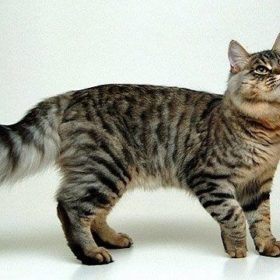 Domestic Cat
Domestic Cat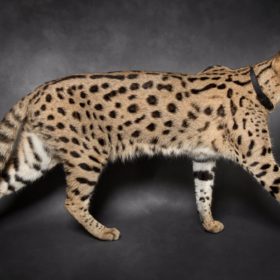 Savannah
Savannah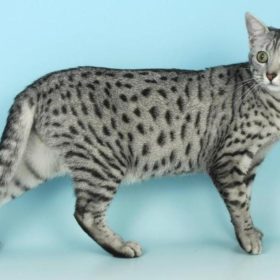 Egyptian Mau
Egyptian Mau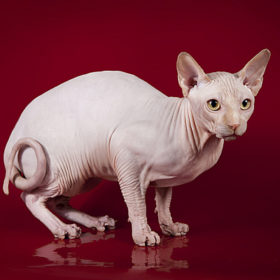 Donskoy Cat
Donskoy Cat Maine Coon
Maine Coon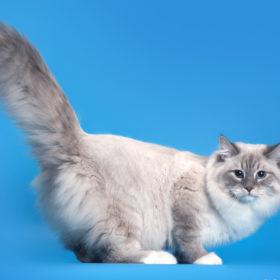 Neva Masquerade
Neva Masquerade